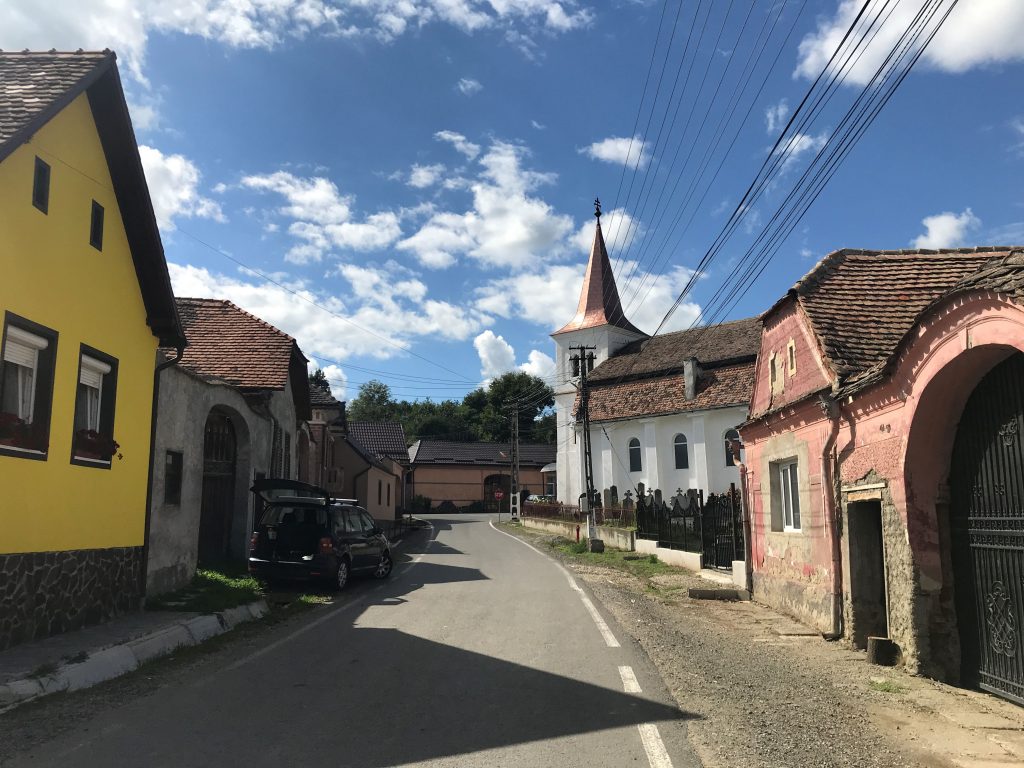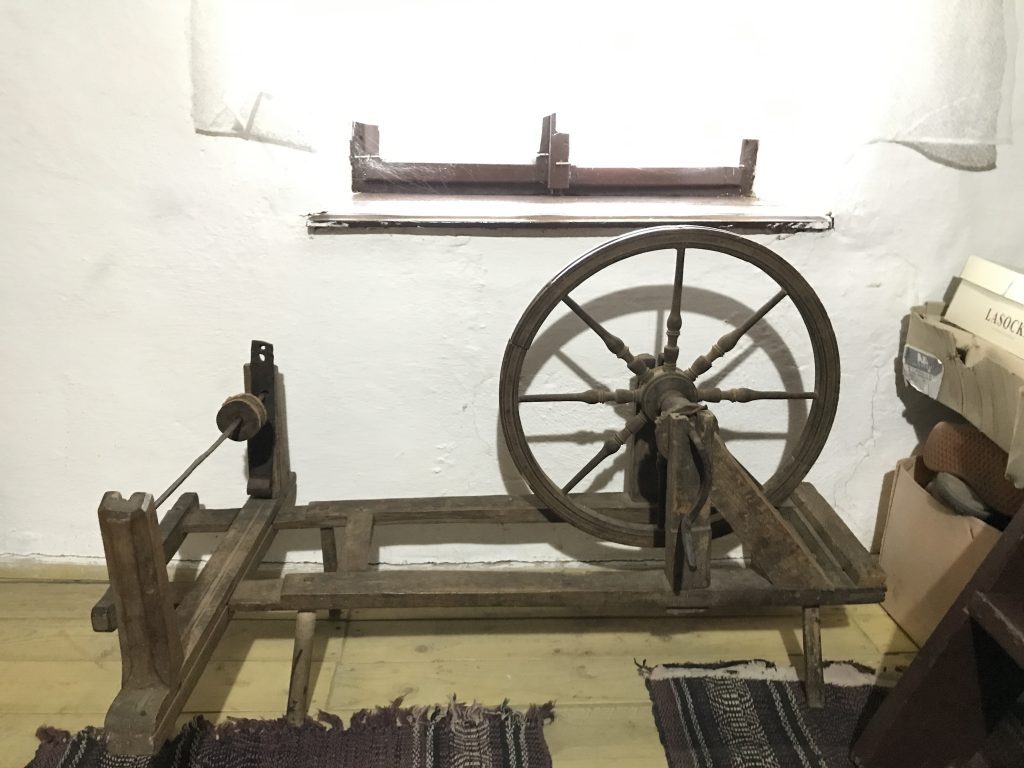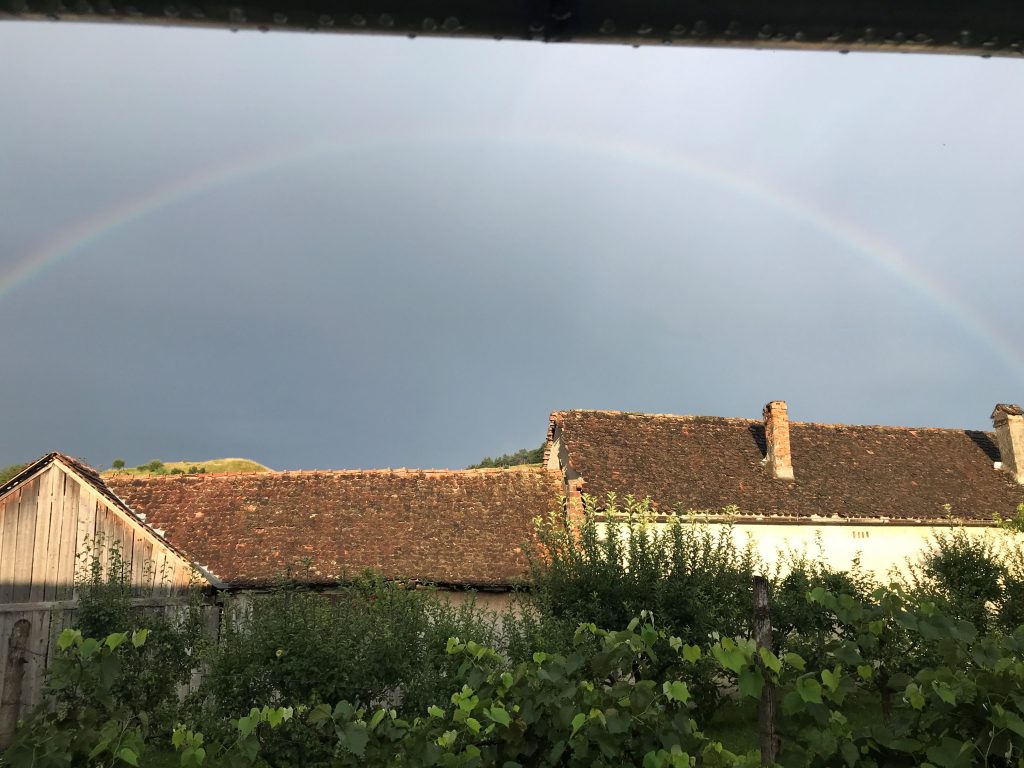

AIR_J has launched AIR@EU, a new section introducing AIRs in the European Union, in June 2024. Related to this, Japanese artist Miyake Suzuko will report her art residency experience in Rumania.

In the summer of 2023, I visited Hundorf, a village in Mureș County, Romania. It was a sunny summer day when I arrived.
I became interested in Romania as a junior high school student, after reading in a stained library book that the culture of witchcraft can still be found there. Intrigued by the figure of witches attempting to face what is unseen, I would later head to Romania to research the country’s culture of witches and folk beliefs.
This was my second visit to Romania, the first being a two-week solo trip I made in summer when I was twenty years old. At the time, I asked people about the culture of witchcraft, but I could not easily obtain information and it proved difficult to meet with practitioners.
Right after finishing my undergraduate degree, I decided that an artist-in-residence would be the best way to spend time abroad, so I searched the Res Artis website for a program in Romania and applied. My reason for selecting Acasă la Hundorf was that it seemed to be the most suitable place to engage with local inhabitants, learn about their culture through dialogue, and draw inspiration from the land.
When I arrived at the village of Hundorf, Maria met me in her car. She has opened her house to artists, who can stay there for two-week residency periods.
The house, which she inherited from her parents, is filled with old-fashioned ornaments, and each room has its own unique atmosphere. There are four rooms, so no more than four people can stay in the house at one time. During my stay, everyone except me was Romanian, but previous residents have also hailed from other countries.
I chose the small room with a spinning wheel.
The house is inhabited by a mischievous orange cat called Taco and a cheerful black dog called Laura.


Hundorf is a small village rich in nature. Situated behind Maria’s house is an apple orchard, while mint grows on the hill behind the church. The phone number of a local farmer is posted on the house refrigerator, and residents can call the farmer whenever they want milk. Food is provided in Hundorf at a small store, but the selection of goods is limited. A car is needed to go to the supermarket outside the village.
Since my stay coincided with the summer vacation, I had the assistance of Andrei and Diana, students from the village who had returned home for the break. The residency was supported through their cooperation, in the form of helping me with English translation when I wanted to interview people in the village, and helping a Romanian artist staying at the same time when she wanted to make clay by guiding her to an area of the Romani people where the soil was favorable. Maria’s son, Theo, was also back home for the summer vacation and helped out in various ways. My residence could be realized thanks to their cooperation.
In the evenings, we sometimes watched movies together and even held a dance party. Romanian people really like to dance. They play music, dance, and develop friendships as if it is ingrained in their bodies.
I decided to ask around in the village to find out about Romanian folk beliefs and witch culture. There are people in Romania who still believe in witchcraft. Two kinds exist: white magic and black magic. Black magic is considered evil by Christians, while white magic is widely accepted by people as a form of healing. The most famous white magic spell in the country is called Deochi, which is a spell to avoid being given the evil eye. It is said that when a woman or a baby receives a glance from another person, the unconscious envy or jealousy contained therein can cause them to fall ill. It is this spell that cures such illness, and just as one is told that every village has a white witch, sure enough there are several healers in Hundorf. All were devout Christian women.
I asked them about their traditional beliefs and the herbs they use for healing. My Romanian was not that good, so Andrei and Diana accompanied me.
The women also told me about the folklore of specters in their village; how one of their grandfathers saw fairies dancing in the middle of the night; how one of their fathers had his milk stolen by a specter and how he got it back, and how people at the spirit festival learn about each other’s lifespan. All were mysterious and fascinating stories.

Romania is home to an ethnic group known as the Romani, or colloquially as Roma. Historically, they are a wandering people and have developed a culture different to that of Romania. There was also an area with Romani inhabitants in the village. My friend wanted to get soil to make clay and I wanted to get catina nuts, so we all decided to go there. Many wild dogs live in that area. Rabies is present in Romania and in some cases, people have actually died from dog bites in the capital. It should also be noted that even domesticated dogs are not leashed and may jump out in alarm.
There were many high-spirited children in the area who led us to a cliff where we could gather soil, while protecting us from the dogs we were not used to by forming a scrum.
The history of the Romani people and Romania is complex, and it is difficult to say that they are on good terms with each other. Despite not usually having a close relationship, the Romani, who are skilled dancers and singers, are invited to Romanian weddings and funerals. The Romani are said to practice black magic, and in fact, if you search on Facebook for the word vrăjitoare, meaning “witch” in Romanian, you will find qualified Romani witches selling online exorcisms and divination. Black magic is considered negatively in the Christian context, and the Romani people also assigned names that signify Catholic priests to the specters passed down to them. Two cultures with different values coexisting in the same country, each intertwining at important social events: That is how I would summarize Romania.

Before visiting Romania, I was already interested in the country and its culture. After visiting, I realized that every culture has a darker side and cannot only be beautiful. I and my fellow residents who I befriended talked not only about culture, but also about politics and life, and it became clear to me that we share similar problems.
This artist-in-residence program held a special significance for me by providing an opportunity to know the country firsthand and hear about its history and culture from people who live there, rather than simply idealizing it through knowledge read in books. To actually experience a country firsthand by staying there is more meaningful than a dozen books. Smelling the grass that is different from that of Japan, encountering plants that I had never seen before, and listening to the voices of people were the most important learning experiences for me.
With an interest in the world of witchcraft and witches who live while confronting the invisible, the residence had great significance for my creative practice in giving me the opportunity to experience the land and culture that sustains its practitioners. When I saw the landscapes seen by the witches, the world of witchcraft appeared at once as a reality.
I will never forget a scene I saw from the car window during my stay: A shepherd was leading a large number of sheep at sunset before darkness descended. I had seen this view in a Japanese book and had always wanted to see it with my own eyes.
The sunsets in Romania are more yellow than those seen in Japan, and this was something I did not know until coming to Hundorf.
The wool of the sheep shines with the splendor of the setting sun. Now I not only know this sight, but also the smell, and the wind. This will be the most important source of nourishment for me as I listen to the voice of the land and create my work.
Based on my stay in Romania, I am currently writing an essay about Romanian culture and specters. I also plan to exhibit an installation based on the photographs I took in Romania and the world I saw.
Miyake Suzuko
Currently enrolled in Global Art Practice at Tokyo University of the Arts.
Raised in Tohoku. While listening to the voices of non-human others, she pursues her interest in things seen by people who live with the land. From 2019, she has been researching the culture of witchcraft in Japan and Romania.
She works in the media of installation and photography based on the use of natural materials. She is also engaged in stage design and the creation of costumes for Butoh dance.
Regarding the action of listening to the voices of invisible others as “prayer,” she herself confronts the existence of invisible others through her creative process and makes works in response. Using her own body as a medium, she conveys the things she “receives” to the world. Just as water falls to the ground and eventually turns to rain, she values the fact that everything is connected like a circle.
2024.7.9Acasă la Hundorf Residency JournalArtist : Miyake Suzuko
2023.5.14AIR and I, 09 : Mentoring Artists for Women’s Art (MAWA) Residence Report